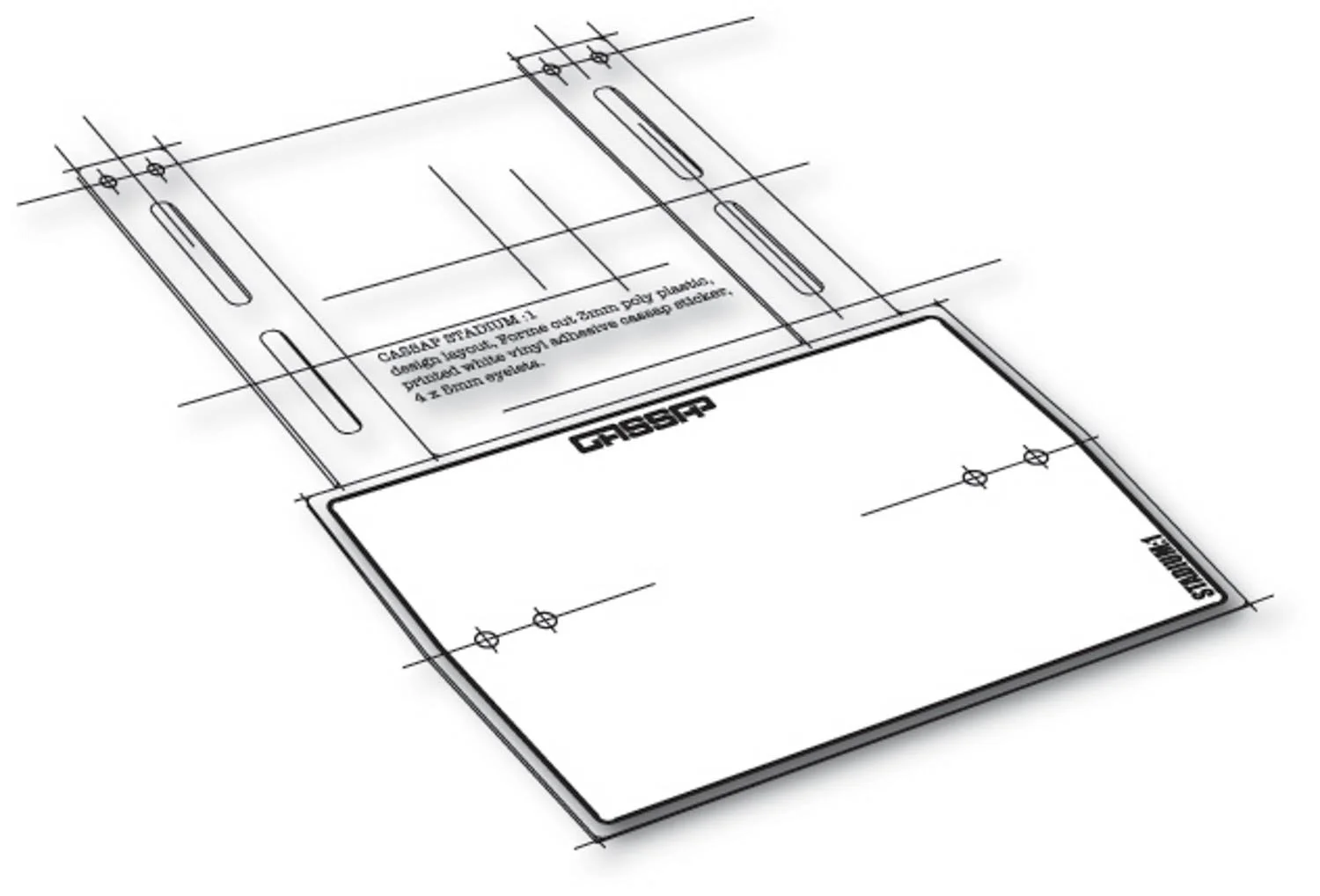History
From the beginning, number plates have played a big part in BMX…square, oval, handwritten or sticker numbers…strapped to your handlebars with cable ties, they came in all shapes and sizes.
Enter Steven Cassap, a young, enterprising 17-year-old Aussie and a front runner of BMX in this country. It was in the family home in Frankston North, Victoria, that Cassap created a totally unique plate design, unlike anything else available on the Australian market at the time, and revolutionised the traditional shape of BMX number plates forever.
Steve: In June 1978 I purchased my first BMX magazine and noticed some riders had custom style number plates on their bikes so, just for fun, I started tricking up the old motorcycle plates we had on our bikes with contact vinyl.
At the time, number plates were a plastic oval shape with moulded wings. One day I watched my brother hacksaw his way around each side of the brake levers to make the plate fit and it was right at that moment I thought of a new design…one with two-straps that would sit hard up against the handlebars, attach with cable ties, and have a distinctly “Motocross” feel.
Initially it was Cassap's BMX mates who lined up for their own number plates but it didn't take the entrepreneurial teenager long to realise this might be a real business opportunity (in the coming years other manufacturers would plagiarise his strap style design).
Steve: I mounted the first plate on my bike and turned up at the local track and everyone asked me where I got it from and if I’d make them one too. Being only 17 and trying to start a business, a lot of people didn't take me seriously, but I was fortunate to meet a plastic manufacturer and printer who totally supported my idea. I got a loan of $2000 bucks from the bank, which was a lot of money back in 1981, and that’s how it all started.
I sold them wholesale to bike shops and gave them to pro riders to generate interest. In 1982 I packed up my old Ford and headed to one of the biggest races of the year in Sydney. There was one way in and out of the track so set my car up and sat in the boot of my car selling number plates all weekend. It ended up being a great weekend of sales and helped me set up distributors in other states for my products.
As things evolved, I designed different shapes, colours, and models of plates. I also expanded into other BMX accessories - clothing, pad sets, brake guards etc. By then I had a better income flow with more products. Advertising the brand would come from magazines, riders, Cassap race team, and freestyle shows. Back then, there was no internet, mobile phones, or social media; it was all about leg work, being out there, being seen…sometimes I wonder how I ever got it off the ground”.
Boosted by increasing sales and popularity, Cassap believed he had a product that had national if not international appeal and marketability. With confidence, he set up a distributor in each state to supply local bike shops and would later expand and sell his number plates via a distributor to the European market.
The European connection came about when friends Denise and Steve Mitchell took their son Cameron to Holland in 1983 for the BMX World Championships. Cameron Mitchell would go on to become World Champion in his age group. Cameron raced with a Cassap plate. This resulted in an order for Cassap plates and numbers in different styles, and would be another turning point for Cassap who was now making a good living out of his BMX business and freestyle shows.
Thousands of Cassap plates and numbers would be sold throughout Australia and Europe in the 1980s. Steven would team up with South Australian Distributor and friend Peter Moyle, who would continue the Brand and Race Team.
Steven Cassap, his number plates, and freestyle shows have become part of Australian BMX history.


